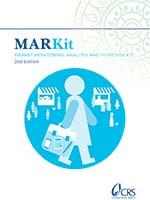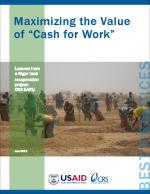About Market-Based Approach
WHAT WE DO
In the aftermath of a disaster, CRS does more than just give food and water to those directly affected. We provide life-saving help and work to restore local economies. When assessments show the local markets can support needed items or services, CRS provides people with vouchers or cash to use at local shops or organized fairs. Vouchers are redeemable for a range of items, including food, hygiene kits, shelter materials, living supplies, and agricultural seeds and tools. Cash provides people the most freedom to make choices about what their families need to survive and recover.
Market-based programming has many benefits:
-
It helps local vendors get back in business.
-
It injects cash into the disaster-stricken economy.
-
It ensures people are the decision-makers in their own recovery.
HOW WE DO IT
-
Market assessment and response analysis: CRS staff and partners conduct a rapid analysis to determine the most appropriate response. By assessing markets before and immediately following a disaster, we can determine whether we need to distribute goods and services that are not available or accessible locally, or whether we can provide people with access to local goods and services through cash or vouchers.
-
Market-based asset transfer: Depending on the local environment, CRS provides food or other items through cash or vouchers. If local markets are not functioning, direct distribution of locally-purchased or imported goods or services may be a more appropriate intervention.
-
Indirect market support: In some cases, CRS gives local vendors access to equipment, transportation, credit or other support to help them restart their businesses. It’s an opportunity for self-recovery. Through their own supply chains, they can provide food or supplies to disaster-affected populations.
-
Market monitoring: CRS and partners track prices and market function. Programs are adjusted as needed to ensure there are no negative impacts on local markets.
Research & Publications
-
Tool Kits
MARKit: CRS Market Monitoring, Analysis and Response Kit-2nd Edition 2020
MARKit is designed to support managers and staff considering and/or implementing market‑based programming or resource‑transfer programs.

MARKit is designed to support managers and staff considering and/or implementing market‑based programming or resource‑transfer programs. More
-
Best Practices
Maximizing the Value of Cash for Work
Lessons from a Niger land recuperation project, CRS EARLI

This report describes the 20 best practices distilled from a recent Real Time Evaluation of EARLI, a cash for work program implemented by CRS in Niger. More

